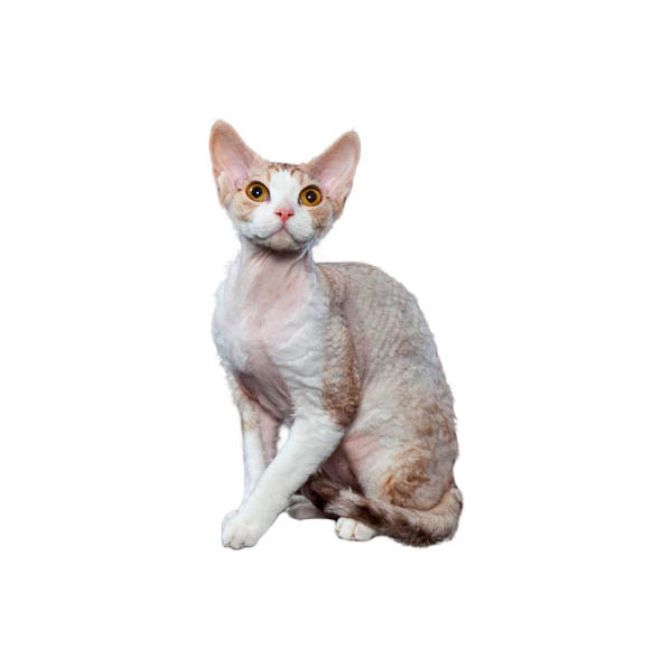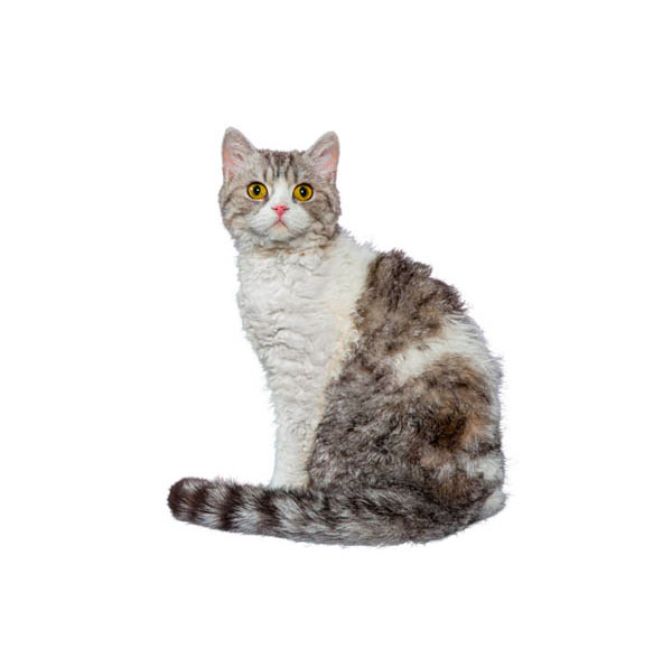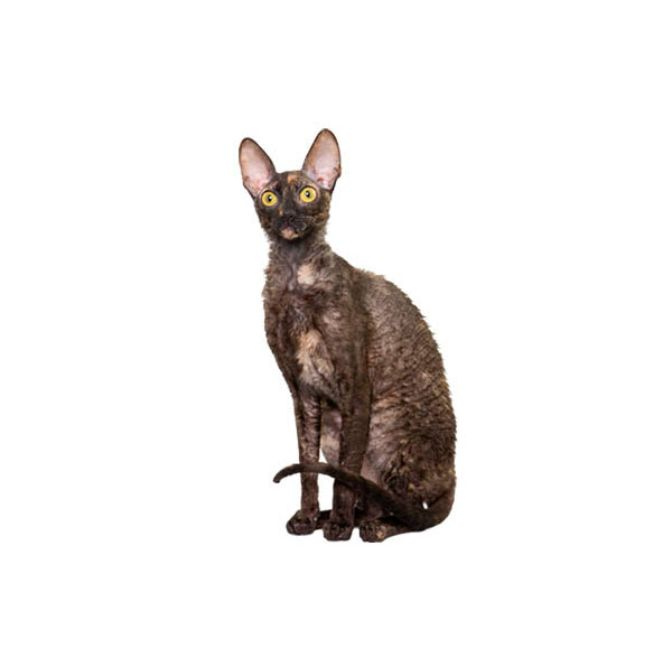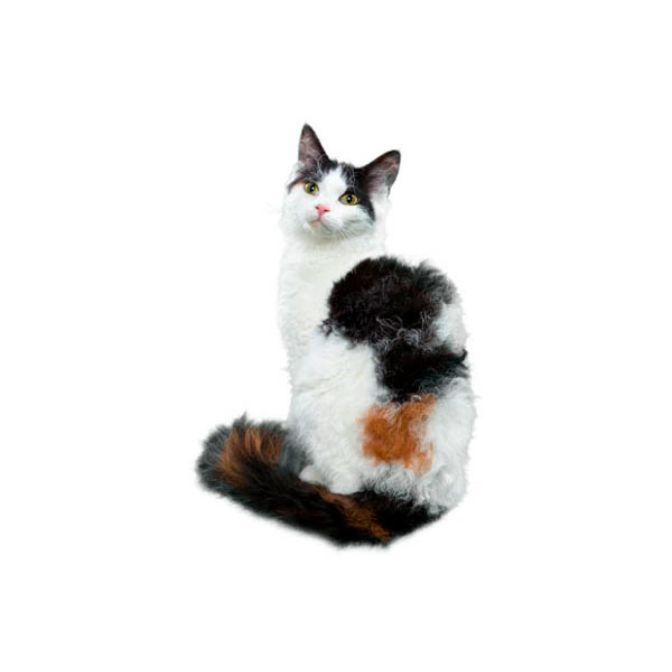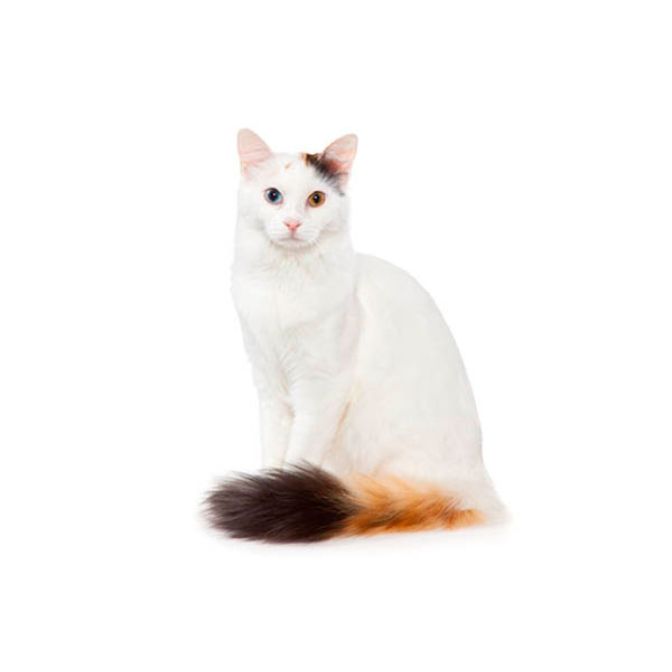Devon Rex
Because of her curly coat and her tail, which wags when she is happy, the Devon Rex is sometimes called a poodle who purrs.
Small To Medium
Short
High
between 2.5 - 4kg
White, black, blue, red, cream, chocolate, lavender, cinnamon and fawn, plus various patterns and shadings
An extraordinarily social cat, the Devon Rex is a wonderful family pet who gets along well with cats and cat-friendly dogs. She loves being with her people and learning new tricks.
Highly intelligent and active, this pixie-like breed is charmingly mischievous and playful. Devon Rex cats are also outstanding jumpers—so if you’re looking for her, look up!
Described by some cat fanciers as the pixie of the cat world, the Devon Rex has a dainty, impish face, large, inquisitive eyes and oversized ears to match. Her whiskers and eyebrows are short.
Her small but athletic body is covered by a coat that is wavy to curly.
9 to 15 years
Devon Rex cats can have coats in a variety of colors, patterns and shadings. Colors include white, black, blue, red, cream, chocolate, lavender, cinnamon and fawn, as well as other colors and shadings.
The Devon Rex is a low-shedding cat breed. Her delicate coat requires only occasional gentle grooming to keep it healthy and to reduce any shedding. Due to their short, thin coat, this breed may require an occasional bath to reduce buildup of sebaceous oils.
Generally, a healthy breed, Devon Rex cats can be at risk for issues including hypertrophic cardiomyopathy, patellar luxation and hereditary myopathy, a condition that affects muscle function.
Devon Rex cats will generally thrive on the nutrition of a quality adult cat food. For those who need help with weight management, consider a healthy weight formula.
The story of the Devon Rex began around 1960 in Devon, England. Here, a feral tomcat with a curly coat sired a litter of kittens with a feral tortoiseshell queen adopted by cat fancier Beryl Cox.
One of the kittens in the litter was curly coated, just like the sire—the result of a rex mutation, a genetic variation in mammals that causes soft, curly fur. Miss Cox named the kitten Kirlee.
Miss Cox learned that another cat with rexed hair, named Kallibunker, had been born 10 years earlier in Cornwall. This was the last known rexed kitten born in England, so she allowed the Cornwall breeders to buy Kirlee, to help them produce more.
Attempts to breed the two cats didn’t produce more curly-haired kittens. After further breeding exploration successfully produced more rexed cats, breeders discovered that the Cornwall and Devon cats didn’t share the same rex genotype.
The two different genotypes produced two slightly different rexed cats. Unlike the Cornwall rexed cat, the Devon rexed offspring had coats with tighter curls, missing or stubby whiskers, and huge ears situated lower on their heads.
The breeds were eventually recognized as two distinct entities, the Cornish Rex and the Devon Rex.
All Devon Rex cats can be traced back to Kirlee, their original ancestor.
Originally, it was thought that Devon Rex and Cornish Rex cats shared the same spontaneous genetic mutation responsible for their curly coats. When breeders realized that the cats had separate genetic variations, they began referring to the Cornish Rex as Gene I Rex and the Devon Rex as Gene II Rex.
Social and entertaining, Devon Rex cats are terrific therapy pets.
